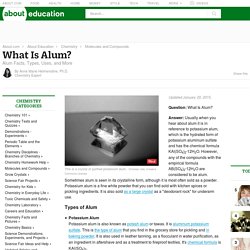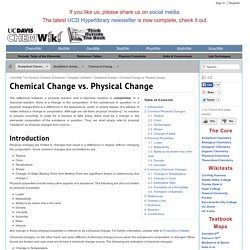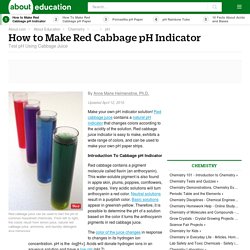

Pickles Recipe - How to Make Pickles - Pickled Cucumbers Video. If you love pickles, you can easily make homemade pickles that taste amazing with just a few simple ingredients.

See how to make your own pickled cucumbers.See Transcript Hi. Richard Ruben here, Chef Instructor at The Institute of Culinary Education in New York City and we’re here with About.com. And today, we’re taking these cute little cucumbers and we’re making pickles. But before you do any kind of canning or preserving, you need to think about safety. Sterilizing Pickling Supplies So, to sterilize your jars you can either place them in boiling water for about six minutes then carefully remove them with a pair of sterilized tongs or alternatively we can make a sterilizing solution.
Picking Good Cucumbers Now, I must say, I’m a little militant about my cucumbers. Spicing Your Cucumbers. Cake Rising. Blueberry Muffin Cake Rising Timelaps. What Is Alum? - Alum Facts, Types, Uses, and More. Updated January 20, 2015.

Question: What Is Alum? Answer: Usually when you hear about alum it is in reference to potassium alum, which is the hydrated form of potassium aluminum sulfate and has the chemical formula KAl(SO4)2·12H2O. However, any of the compounds with the empirical formula AB(SO4)2·12H2O are considered to be alum. Sometimes alum is seen in its crystalline form, although it is most often sold as a powder. Potassium alum is a fine white powder that you can find sold with kitchen spices or pickling ingredients. Claussen Pickles Commercial - Taste Test. Red Cabbage Chemistry. Peel off six big cabbage leaves and put them in a blender with 12 cups of water.

Liquify! Depending on how much Red Cabbage Indicator you want to make use the optimum ratio of one cabbage leaf to two cups of water. Pour the purplish cabbage liquid through a strainer to filter out all of the big chunks of cabbage. Doesn’t cabbage juice smell great? Save the liquid for the experiments to follow. Do It Yourself. The phenomenon of charge transfer is seen in gemstones such as blue sapphires.

You can try out this process yourself using iodine and starch. Iodine produces a charge-transfer complex with starch, producing an intense color. Many different food groups contain a carbohydrate known as starch. Using an iodine solution, you can test for the presence of starch. When starch is present, the iodine changes from brown to blue-black or purple. Warning. Questions from Kids: Why does baking soda react with vinegar? There’s something awesome about answering questions for kids.

Redditor HippySkippy noted that her 7-year-old son had recently developed a love for the wondrous world of chemistry. However, like many books written for children, the books she’d been able to find often said to mix baking soda (sodium bicarbonate) and vinegar (dilute acetic acid) to build an “at-home volcano.” Many of us know that an acid (like vinegar) and a base (like baking soda) react. But how many folks know why? So, Little Joey (that’s your name now), allow me to explain. Chemical Change vs. Physical Change. The difference between a physical reaction and a chemical reaction is composition.

In a chemical reaction, there is a change in the composition of the substances in question; in a physical change there is a difference in the appearance, smell, or simple display of a sample of matter without a change in composition. Although we call them physical "reactions," no reaction is actually occurring. In order for a reaction to take place, there must be a change in the elemental composition of the substance in question. Thus, we shall simply refer to physical "reactions" as physical changes from now on. Introduction Physical changes are limited to changes that result in a difference in display without changing the composition. Texture Color Temperature Shape Change of State (Boiling Point and Melting Point are significant factors in determining this change.) StudyJams. StudyJams. Activities - Rock Candy. Ah, the sweet taste of science at work!

Create shimmering sugar crystals with an experiment that really rocks! Rock Candy Recipe. Rock Candy - How to Make Rock Candy Video. You don't have to visit a candy store to get colorful rock candy.

See how easy it is to grow your own sparkling (and tasty) rock candy crystals at home.See Transcript Hi, I'm Dr. Rock Candy Recipe - How to Make Rock Candy. Red Cabbage pH Indicator - How to Make Red Cabbage pH Indicator. Updated April 12, 2016.

Make your own pH indicator solution! Red cabbage juice contains a natural pH indicator that changes colors according to the acidity of the solution. Red cabbage juice indicator is easy to make, exhibits a wide range of colors, and can be used to make your own pH paper strips. Red cabbage contains a pigment molecule called flavin (an anthocyanin). This water-soluble pigment is also found in apple skin, plums, poppies, cornflowers, and grapes. The color of the juice changes in response to changes in its hydrogen ion concentration. pH is the -log[H+]. Continue reading below our video.